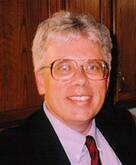
JALT Testing & Evaluation SIG Newsletter
Vol. 13 No. 3. Nov. 2009 (p. 2 - 5) [ISSN 1881-5537]

 PDF Version
PDF Version
Insights in Language Testing: An Interview with Dr. George Engelhard, Jr.
by Phillip Rowles and Joseph Ring
 Dr. Engelhard is a Professor of Educational Measurement and Policy at Emory University. He is co-editor of four books and has authored or co-authored over over 100 journal articles, book chapters, and monographs. Four of his most recent co-edited books are Advances in Rasch Measurement, Volume 1, and Objective Measurement: Theory into Practice, Volumes 3, 4, and 5. He serves on several national technical advisory committees on educational measurement in the USA. This interview was conducted in September 2009. |